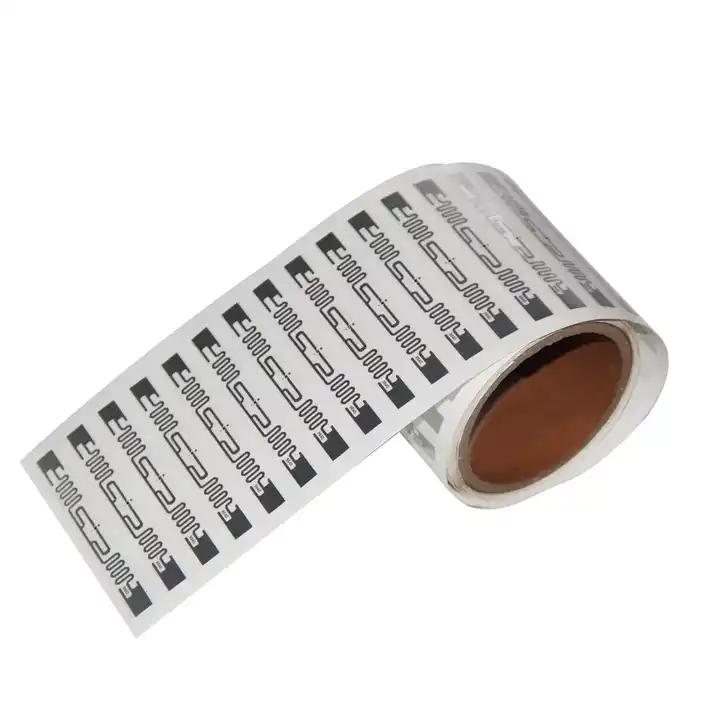
RFID Windshield Sticker for Vehicle Tracking and Secure Access Control
The RFID Windshield Sticker is a versatile and high-performance solution designed for vehicle tracking and secure access control.
RFID (Radio Frequency Identification) tags are wireless technologies that facilitate the remote reading, storage, processing, and transmission of item information. Comprising an antenna and a chip, RFID tags communicate data wirelessly with readers. These tags can consistently transmit information even in challenging environments, such as extreme temperatures, high speeds, and vibrations. RFID tags find extensive applications across various sectors, including logistics, supply chain management, retail, industrial, and healthcare. In this article, we will explore the intricacies of RFID tags from different perspectives.
RFID tags are made up of two key components: a microchip and an antenna. The microchip stores a unique ID number and other pertinent information, while the antenna enables communication with the RFID reader. This simple yet effective design makes RFID technology versatile and widely applicable.
RFID technology is categorized into three frequency ranges: low frequency (LF), high frequency (HF), and ultra-high frequency (UHF).
Low Frequency (LF): Ranging from 125 kHz to 134 kHz, LF RFID tags are generally used for close-range and low-speed applications, such as access control cards and pet identification tags.
High Frequency (HF): Operating at 13.56 MHz, HF tags are suitable for applications that demand a moderate information capacity, including smart cards and payment tags.
Ultra-High Frequency (UHF): With a range of 860 MHz to 960 MHz, UHF tags are designed for high-capacity, high-speed, and long-range identification, making them ideal for logistics and supply chain management.
The choice of frequency directly correlates with the specific application requirements and environmental conditions.
Communication protocols and data storage formats are essential for RFID tags. Common protocols include ISO/IEC 14443, ISO/IEC 15693, ISO/IEC 18000, and EPCglobal.
ISO/IEC 14443 and ISO/IEC 15693 are tailored for HF tags, while ISO/IEC 18000 and EPCglobal cater to UHF tags.
In terms of data storage formats, RFID tags utilize identifiers such as Unique Identifier (UID), Tag Identifier (TID), and Electronic Product Code (EPC). The UID and TID serve as unique identifiers for each tag, while the EPC encodes information for tracking and management of goods.
RFID tags can be classified into three main types based on their power source:
Passive Tags: The most common variety, these tags do not contain a battery. They rely on electromagnetic induction from an external reader to power up and transmit data. Passive tags can be LF, HF, or UHF types.
Semi-Passive Tags: These tags have a small internal battery that enables them to send signals autonomously, although they still require activation from a reader for additional data retrieval. A typical example is the 125KHz LF tag combined with a 2.4GHz active tag.
Active Tags: Equipped with internal batteries, these tags can independently transmit signals without the need for external activation. They are commonly employed in 2.4GHz applications.
The chip is the heart of an RFID tag and incorporates vital elements such as antennas, readers, RAM, ROM, and various sensors. RFID chips are varied, generally split into two categories: low-cost and high-performance options. The choice of chip largely depends on the application’s demands and budget constraints. Prominent RFID chip manufacturers include Impinj, NXP, Alien, STMicroelectronics, and Infineon.
RFID technology has found extensive use across multiple domains, including:
Logistics and Supply Chain Management: RFID tags enable real-time tracking and monitoring of items’ location, quantity, status, and flow. This enhances logistics efficiency and accuracy significantly.
Retail: Within retail, RFID tags assist in inventory management, theft prevention, and improving customer shopping experiences.
Industrial: In manufacturing, RFID tags help monitor and manage equipment and items along production lines.
Healthcare: RFID tags improve patient identification, as well as the management of medicines and medical devices.
Internet of Things (IoT): RFID tags can connect with other IoT devices to facilitate intelligent management and control of items.
With the continued development of the IoT, RFID tags are expected to assume ever-greater roles across additional fields.
In conclusion, RFID tags represent a powerful wireless technology capable of enabling long-range and high-speed data transmission. Their application fosters digital transformation within logistics and supply chain management, leading to enhanced productivity and service quality. Nonetheless, there are challenges associated with employing RFID technology, such as security concerns and cost issues, which need to be addressed through ongoing technological innovation.
As industries continue to integrate RFID into their operations, its potential will expand, driving efficiency and innovation across various domains.
Newest trends and common knowledge in RFID laundry tags.

The RFID Windshield Sticker is a versatile and high-performance solution designed for vehicle tracking and secure access control.

Discover advanced RAIN RFID laundry tags designed for durability and efficiency in textile management, ensuring reliable tracking through rigorous laundering processes.

RFID chips in uniforms and linens enhance tracking, reduce loss, and optimize laundry management for more efficient operations and inventory control.
Didn’t find what you want? Ask our manager for help!